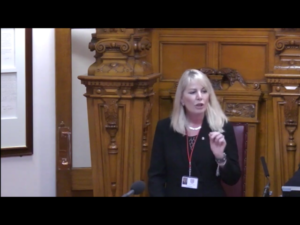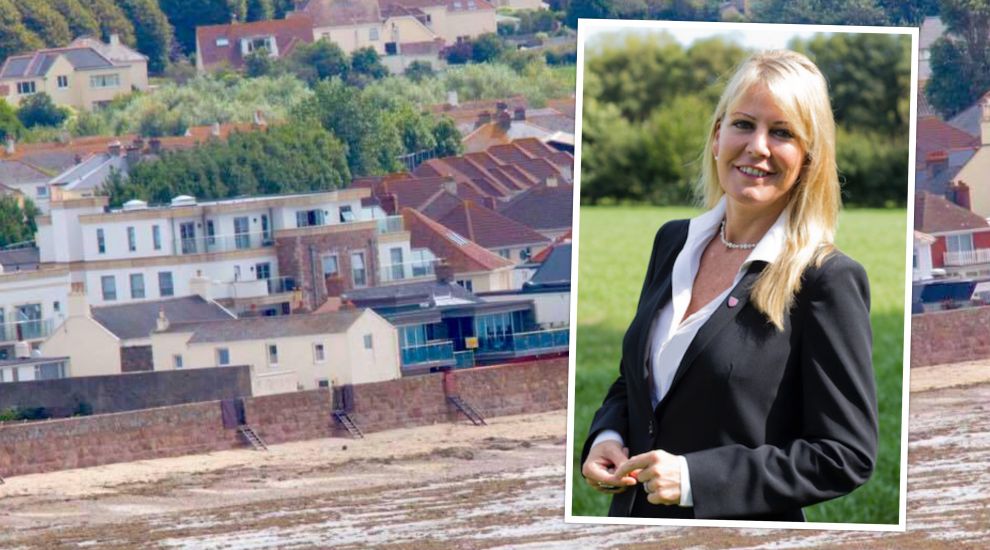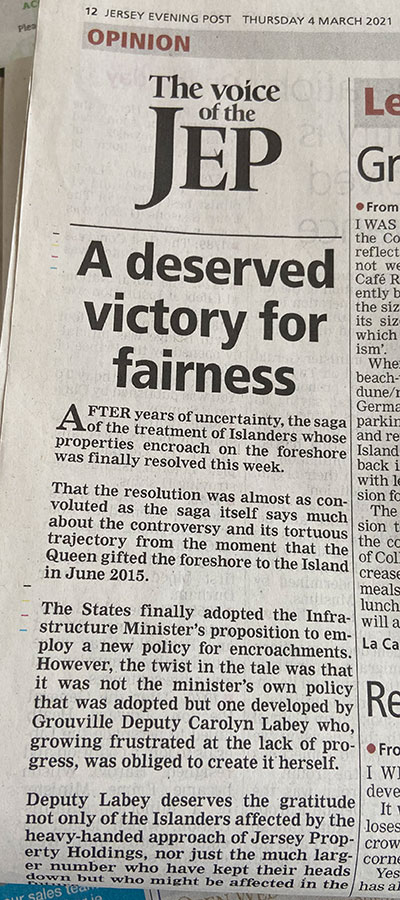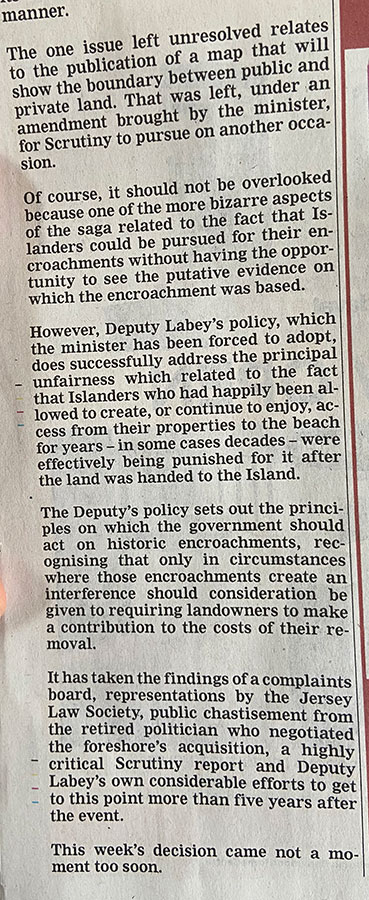A new policy for dealing with encroachments on the Foreshore has finally been agreed by States Members, nearly four years after Express first revealed that the Government was pursuing sea wall property owners for payments.
The Foreshore is the boundary defined as lying between high tide and low tide. It historically belonged to the Crown, but was passed to Jersey in 2015 as a gift.
From that point, the Government began asking property owners for payment if their properties included balconies, steps or other encroachments on the coastal zone – even though no public map of its boundaries were available, and even if the encroachments had been approved by Planning.
Pictured: Alan Luce was slapped with an unexpected bill of nearly £30,000 when he tried to sell his house.
As revealed by Express, Alan Luce – who said the saga left him so stressed that he felt he had no choice but to leave the island – was the first. The States Complaints Board later ruled that he and Julian Mallinson should have been treated better by the Government during the saga.
Since the practice emerged, International Development Minister and Grouville Deputy Carolyn Labey has been pushing for a clear boundary map, and a “fair” policy set out in writing and agreed by States Members in a move that has pitted her against her fellow Ministers.
Infrastructure Minister Deputy Kevin Lewis put forward a plan last year that included a ‘sliding scale’ of payments that would have seen individuals pay amounts based on the nature of the encroachment and the length of time it had stood there.
It was called in for Scrutiny by politicians, who concluded that there were a number of issues with the plan and urged him to amend it. An updated version of the policy was laid before States Members for a vote yesterday.
Disagreeing with much of the content of the Minister’s plan, Deputy Labey put forward an amendment, which was, in effect, her own version of the policy.
It suggested that minor encroachments should be allowed to remain under conditions set out in a licence agreement, whereas more significant ones may have to be removed with the owner contributing financially. This contribution may vary depending on the age of the encroachment.
She also demanded that the Minister produce a map of the Foreshore alongside this policy – something Deputy Lewis was reluctant to do, claiming that it would potentially constitute a breach of coastal property owners’ privacy.
Deputy Labey’s proposal passed with 37 votes, but was itself tweaked by the Minister, who got States Members to agree that he should report back to Scrutiny with a plan for how a boundary map could look.
 During the debate, Deputy Lewis hit out at suggestions that the decision to make coastal owners pay for encroachments was an “income-generating exercise”.
During the debate, Deputy Lewis hit out at suggestions that the decision to make coastal owners pay for encroachments was an “income-generating exercise”.
“I’m obliged to sell land, I cannot give it away. That would be illegal. Planning permission does not mean that you have good title to the land, doesn’t mean you own the land and as for extracting money, we’re not extracting money at all,” he said.
But Deputy Labey later noted that “nobody is suggesting [the encroachments] are free, Minister”, as she presented her own policy, which she said “honours the agreement that was made in the Deed of Transfer gifting the Foreshore and… seeks fairness to the public where the Foreshore has been encroached.”
Deputy Labey’s proposal passed with 37 votes, after the Minister tweaked it.



